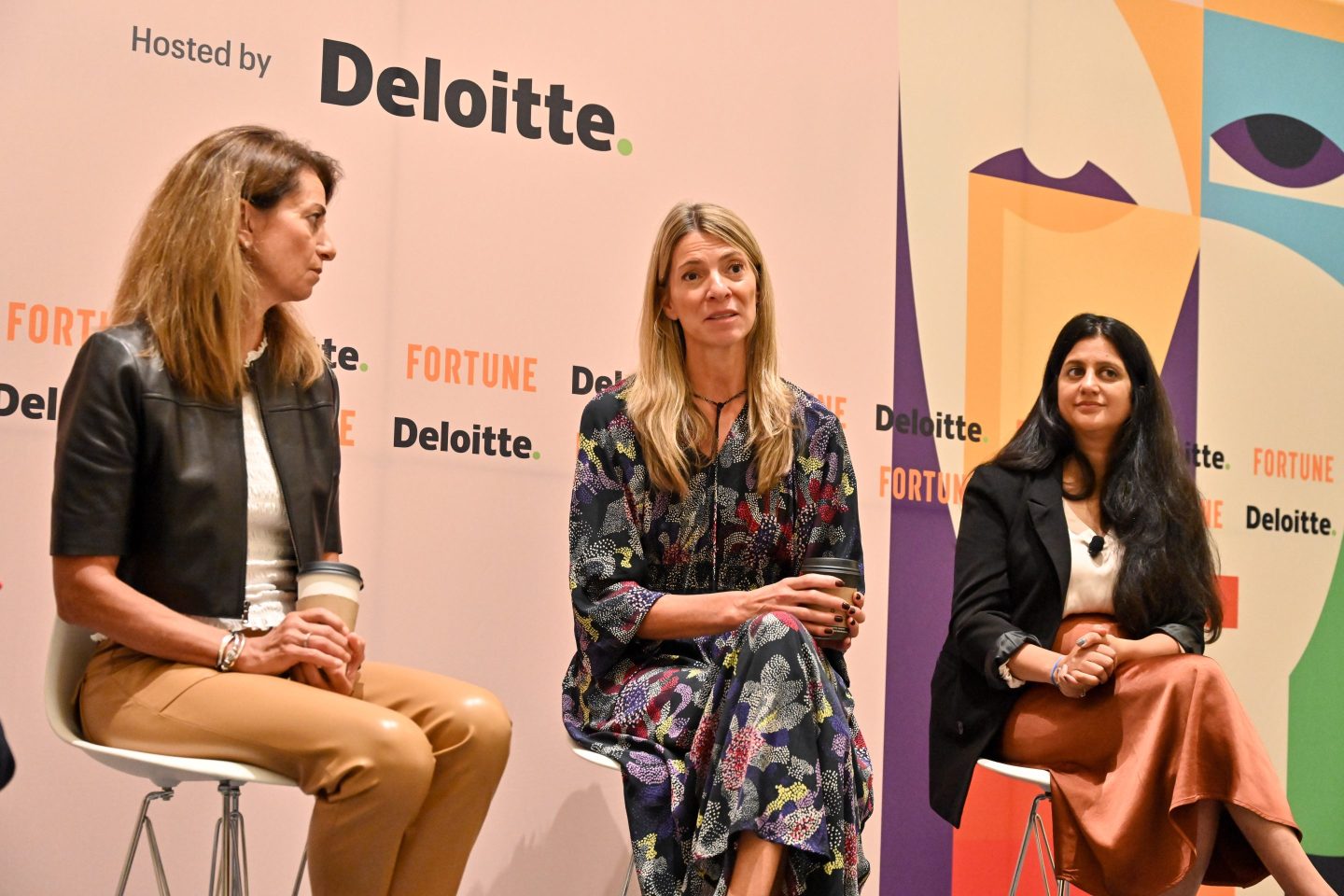Good morning!
As employers scramble to meet demands for new worker benefits amid rising costs, it can be hard to gauge whether investing in these offerings leads to improved business performance. Objectively, leaders know that a happy and engaged workforce is good for business, but is that costly benefits package actually contributing to the bottom line?
On Wednesday, that question came up at a Fortune’s Most Powerful Women Summit panel in Laguna Niguel, Calif.
“I’m just trying to understand the tradeoffs from costs,” one attendee asked panelists, which included executives from Mastercard, Guild, and Deloitte. “[Is it] creating productivity on the other side? Or do we just have to get used to escalating expectations? It’s a very significant cost pressure for us in terms of meeting employee expectations.”
While the executives admitted they were still answering these questions themselves, they offered insight into how they calculate whether benefits offerings improve their staff’s performance.
Bijal Shah, chief experience officer at Guild, a startup that provides education and training resources to employees, said it’s important to hold benefits partners accountable and ask for evidence that their services bolster productivity or engagement. Shah said clients often send questions and requests for data on how Guild benefits their bottom line.
“I do think you’re going to hold your partners accountable to providing that type of data and information, and scrutinizing if they don’t have it, to be able to actually move your organization forward and not feel like it’s just going to the expense line,” she said.
At Mastercard, the company is looking inward for an answer. The payment processing giant conducted a total rewards optimization study last year, asking employees for feedback on the benefits Mastercard offers and what tradeoffs they’d make to get their desired benefits. Through the study, the company’s leadership discovered that employees were interested in purchasing company stock at a discounted price. After approaching the board and getting approval for the benefit, the company is now conceptualizing how to roll out the offering in 2024.
“I do think that there’s an opportunity for us to, obviously from an employer perspective, constantly [and] holistically look at our offerings, and obviously, pressure test our partners to really show the ROI and get the feedback from our employees,” said Lucrecia Borgonovo, Mastercard’s chief talent and organizational effectiveness officer.
But it’s often still difficult to correlate benefits to metrics like productivity. “We’ve thought a lot about: How do we measure well-being and attach it to productivity—not necessarily utilization but actual productivity,” said Stephani Long, chief talent officer at Deloitte US. She says it’s hard to parse whether employees are more productive because they’re happy with their benefits.
Leaders may need a bit of blind faith that their benefits offerings are driving results. “I’m a believer that many of these investments, maybe all of them, are actually saving money, not costing money,” Long said. Take paid family leave, for example. Providing paid time off for 16 weeks is much cheaper than an employee leaving their job permanently to care for their child, which forces employers to spend considerably more money backfilling a now-vacant role.
Paige McGlauflin
paige.mcglauflin@fortune.com
@paidion
Reporter's Notebook
The most compelling data, quotes, and insights from the field.
Engaging in difficult conversations is a learned skill useful in the workplace, so Dartmouth College launched a program to equip its undergrads with this lost art.
The program “seeks to prepare the Dartmouth community with the mindset and skills necessary to engage in successful dialogue, even in the face of the most emotionally or politically charged disagreements,” according to Dartmouth president Sian Beilock.
Around the Table
A round-up of the most important HR headlines.
- Microsoft, Amazon, and other companies have joined the Center for Industry Self-Regulation in establishing policies for AI use in recruiting and hiring, such as certifying that AI models aren’t discriminatory and are overseen by human employees regularly. Center for Industry Self-Regulation
- The U.S.-based CFA Institute issued a DEI code for British financial institutions yesterday, including guidelines for hiring and promoting more women and minority employees. Companies that sign on will report their progress annually to the Institute. Reuters
- Two-thirds of employees from marginalized racial groups in Australia, Canada, New Zealand, South Africa, the U.K., and the U.S. say they’ve experienced racism at work, according to a new Catalyst study. Derogatory comments were the most common forms of discrimination cited. Catalyst
- Almost three-fourths of HR leaders surveyed in a recent Gartner poll pointed to return-to-office mandates as the most likely topic to create workplace leadership conflict. Bloomberg
Watercooler
Everything you need to know from Fortune.
RTO tax. Working in person costs workers an average of $51 per day, according to data from Owl Labs. That includes $16 for lunch, $14 to commute, and $13 allocated for breakfast and coffee. —Chris Morris, Jane Thier
Health care needs self-care. CVS CEO Karen Lynch told the audience at Fortune’s Most Powerful Women Conference on Monday that a recent walkout by company pharmacists resulted from high pandemic-related demand for health care and subsequent burnout. —Erin Prater
Bridging the gap. Former IBM CEO Ginni Rometty also took the stage this week to emphasize the importance of skill-based hiring over degree-based hiring. —Kylie Robison
This is the web version of CHRO Daily, a newsletter focusing on helping HR executives navigate the needs of the workplace. Sign up to get it delivered free to your inbox.













